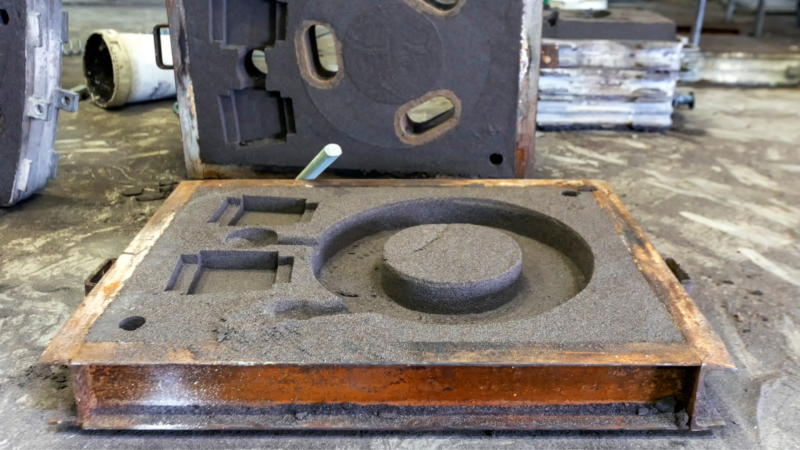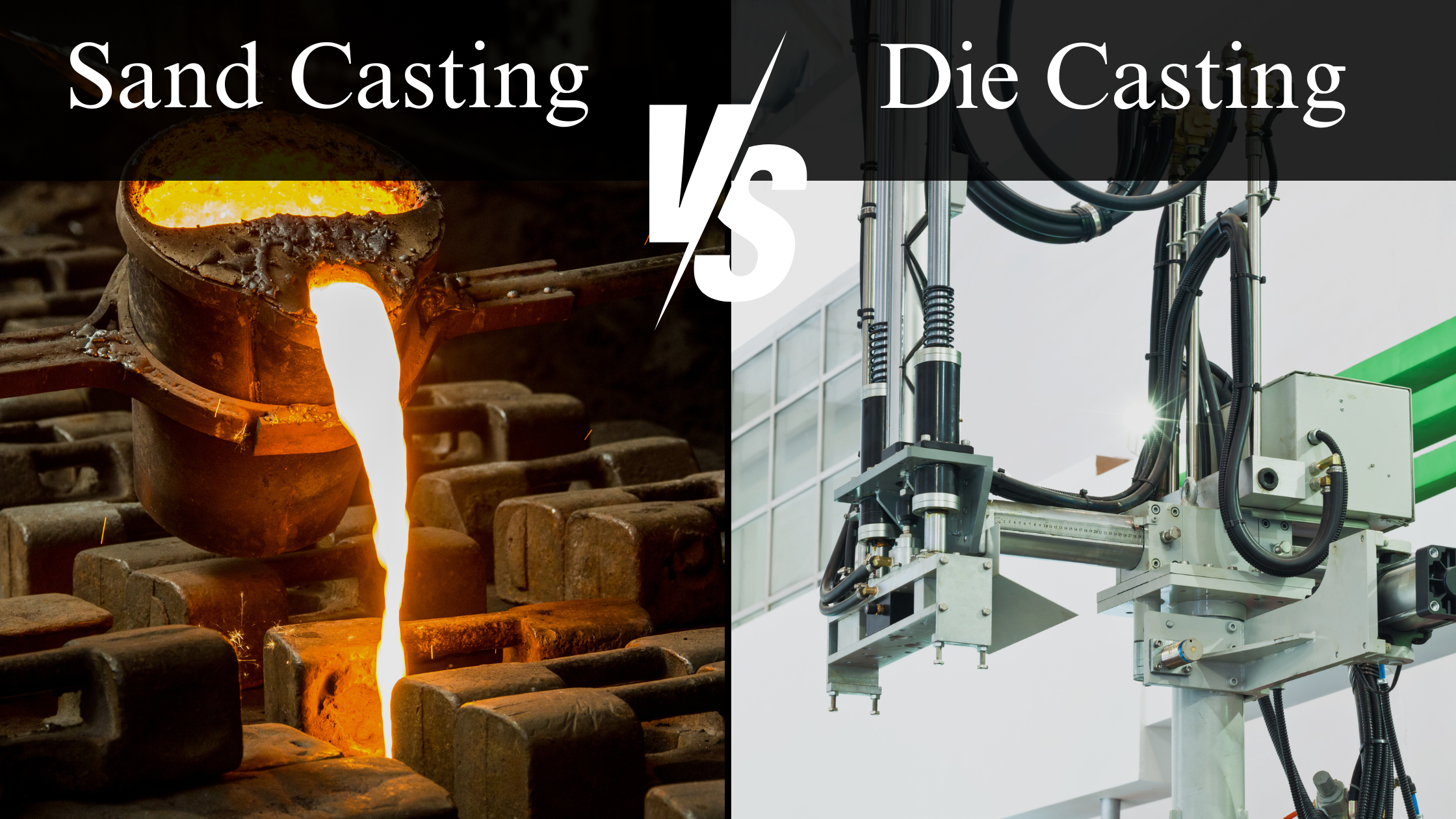Die Casting vs Sand Casting: A Comprehensive Comparison
When it comes to metal casting, two popular processes dominate the foundry industry: die casting and sand casting. Each method has its own unique advantages and considerations, making it essential for manufacturers to understand the differences before choosing the right one for their application. In this comprehensive comparison, we delve into the intricacies of die casting versus sand casting.
Die casting, known for its precision and high-volume production capabilities, utilizes a reusable mold or die to create complex metal parts with tight tolerances. On the other hand, Sand Casting, a more traditional method, involves creating a mold using a mixture of sand and a binder, casting the molten metal into the mold, and then removing the sand mold once the metal has solidified.
Throughout this blog, we’ll explore various aspects such as cost-effectiveness, design flexibility, surface finish, and production speed to give you a clear understanding of the strengths and limitations of each process. By the end, you’ll be equipped with the knowledge to make informed decisions and optimize your manufacturing operations. So let’s dive in and compare die casting and sand casting.
The Die Casting Process
Die casting is a precision metal casting process that involves injecting molten metal into a reusable steel mold, known as a die, under high pressure. This method is widely recognized for its ability to produce complex shapes with tight tolerances and excellent surface finishes. The die can be designed to create intricate details, making die casting ideal for mass production of parts requiring high accuracy and dimensional stability. The process is commonly used in industries such as medical, aerospace, and consumer electronics for manufacturing components like oxygen pumps, gear boxes, and brackets.
Die casting begins with the preparation of the die, which is typically made of two halves that are machined to form the desired shape of the final part. The molten metal, often aluminum, zinc, or magnesium, is then injected into the die cavity at high pressure using a casting machine. The pressure helps fill the mold quickly and ensures the metal solidifies rapidly, resulting in short cycle times. Once the metal has cooled and solidified, the die is opened, and the finished part is ejected, ready for further processing or assembly.
Die Casting Pros
- Intricate and uniform designs
- Cost-effective when producing at high volume
- Minimal post-processing tooling costs
- Minimal downtown between casts
Die Casting Cons
- High initial investment
- Initial tooling costs creating the intricate steel molds.
- Costs are high in small scale production runs
- The high pressure cab cause porosity in the final parts
- This process does not work with ferrous metals
- Ferrous metals are any metal that contains iron
- Suited for smaller more intricate metal casts
The Sand Casting Process

Sand casting is one of the oldest and most versatile casting methods, dating back thousands of years. This process involves creating a mold made of sand mixed with a binder, which is then packed around a pattern to form a cavity for pouring the molten metal. Sand casting is known for its simplicity and adaptability, making it suitable for producing large parts, one-of-a-kind components, and prototypes. While sand casting may not offer the same level of precision as die casting, it remains a cost-effective and widely used method in various industries, including aerospace, construction, and power plants.
The sand casting process begins with the creation of a pattern, typically made of wood, plastic, or metal, that represents the final shape of the part to be cast. The pattern is placed in a box filled with sand mixed with a binder, such as clay or resin, to create a mold cavity. Once the pattern is removed, the mold cavity remains, ready to receive the molten metal. The metal is poured into the mold, filling the cavity and taking the shape of the pattern. After the metal has solidified, the sand mold is broken apart, revealing the cast part within. Sand casting allows for the production of large parts with complex geometries and is particularly suited for low to medium volume production runs.
Sand Casting Pros
- Can produce larger parts
- Allows casting a wider range of metals and alloys
- The sand molds are less expensive than the steel molds used in die casting
- Flexibility in shape and design
Sand Casting Cons
- Longer mold preparation time between castings
- Additional machining required for surface finishes
- Additional labor required preparing sand molds
Comparison of Die Casting vs Sand Casting
When comparing die casting and sand casting, several key factors need to be considered to determine the most suitable method for a specific manufacturing application. Cost-effectiveness is a crucial aspect to evaluate, as die casting typically involves higher tooling costs but lower per-part costs for high-volume production runs. Sand casting, on the other hand, offers lower initial tooling costs but may have higher per-part costs due to additional finishing and machining requirements. Design flexibility is another important consideration, with die casting allowing for intricate shapes and thin walls, while sand casting is better suited for producing large parts with simpler geometries.
Surface finish is a significant differentiator between die casting and sand casting, with die-cast parts often exhibiting superior surface quality due to the precision of the molds. Sand casting may result in rougher surfaces that require post-processing to achieve the desired finish. Production speed is another factor to weigh when choosing between die casting and sand casting, as die casting machines can produce parts at a rapid pace, making it ideal for high-volume production. Sand casting, while versatile, may have longer lead times due to the manual labor involved in mold preparation and casting, making it more suitable for low to medium volume runs.
In terms of material selection, sand casting offers a wider range of metals and alloys that can be used since die casting does not allow for the use of ferrous metals. Die casting on the other hand specializes in alloys to make intricate smaller casts.
Factors to Consider When Choosing a Casting Method
When faced with the decision of selecting between die casting and sand casting for a manufacturing project, several factors should be carefully evaluated to determine the most appropriate method. The volume of production plays a significant role in this decision, as die casting is well-suited for high-volume runs where consistency and speed are paramount.
Sand casting, on the other hand, may be more suitable for smaller to medium batches or prototyping where tooling costs need to be minimized. The complexity and the size of the part is another critical factor, with die casting offering superior precision for intricate shapes, while sand casting excels in producing larger parts.
Cost considerations are crucial when choosing between die casting and sand casting, as the initial tooling costs and per-part costs can vary significantly between the two methods. Die casting has higher tooling costs but lower per-part costs, making it cost-effective for large production volumes.
Sand casting, with its lower tooling costs but potentially higher per-part costs, is more suitable for low to medium volume runs where tooling expenses need to be minimized. Material selection is also important, with die casting using a range of metal alloys compared to sand casting, that allows for a greater flexibility in material properties and performance.
Time should also be a factor to consider when choosing your casting method. Die casting has a longer initial set up time for tooling its intricate steel molds, but can produce at a higher rate after the molds are produced. While sand casting has a shorter initial production time but has a longer time between casts.
Partner with Quaker City Casting
The choice between die casting and sand casting ultimately depends on the specific requirements of the manufacturing project, including volume, complexity, cost, material selection, and lead time. Die casting offers high precision, and fast production speeds making it ideal for high-volume runs of small intricate parts.
Sand casting is cost-effective, versatile, and well-suited for producing large parts and prototypes with simpler geometries. By carefully evaluating the advantages, limitations, and key considerations of each method, manufacturers can make informed decisions to optimize their production processes and achieve the desired quality and efficiency in metal casting operations.
At Quaker City Castings we are a leading sand casting and centrifugal casting foundry. If your project needs a foundry to partner with we’ve got you covered. Our team of highly skilled foundry technicians can help you get started today!


Leave A Comment